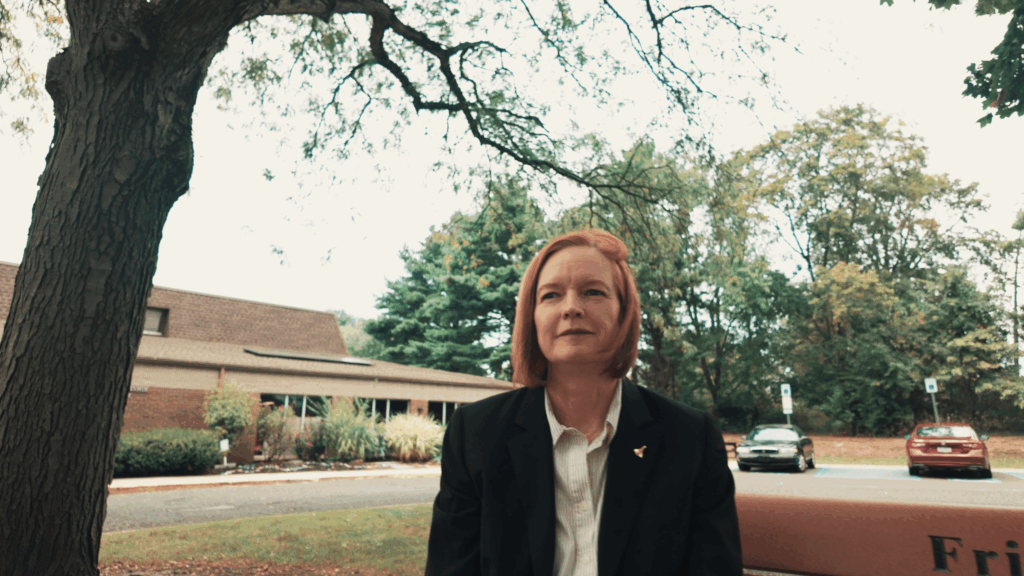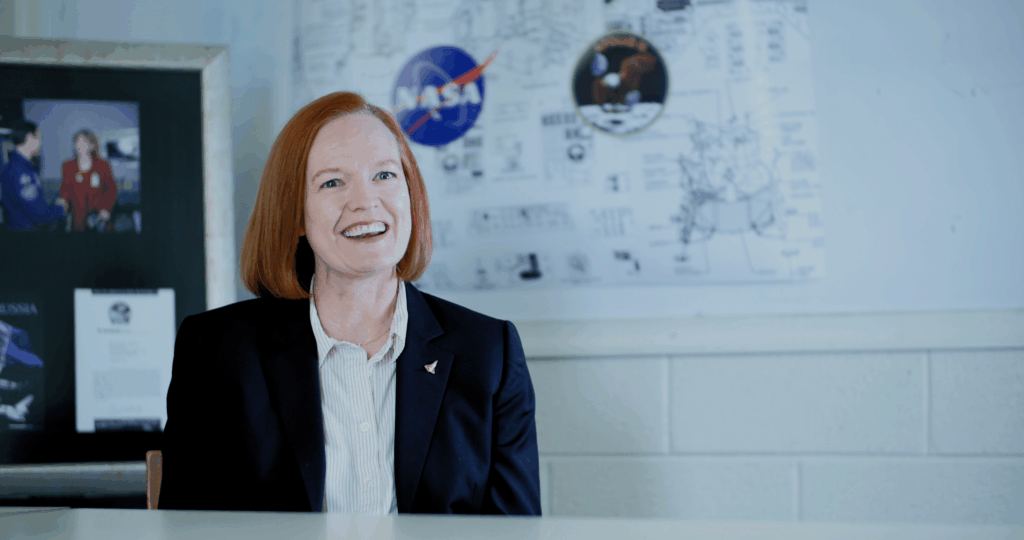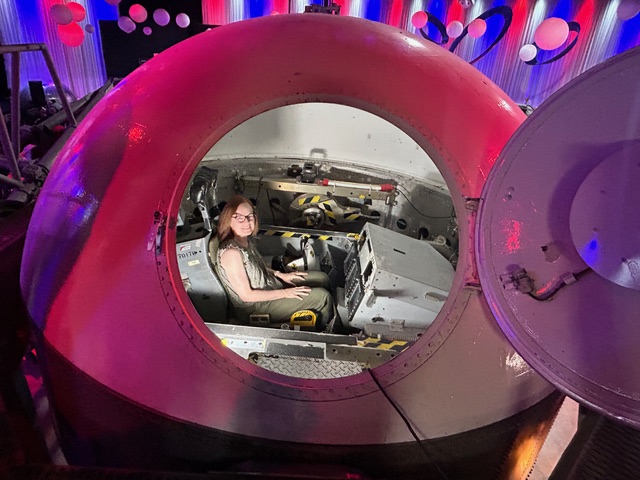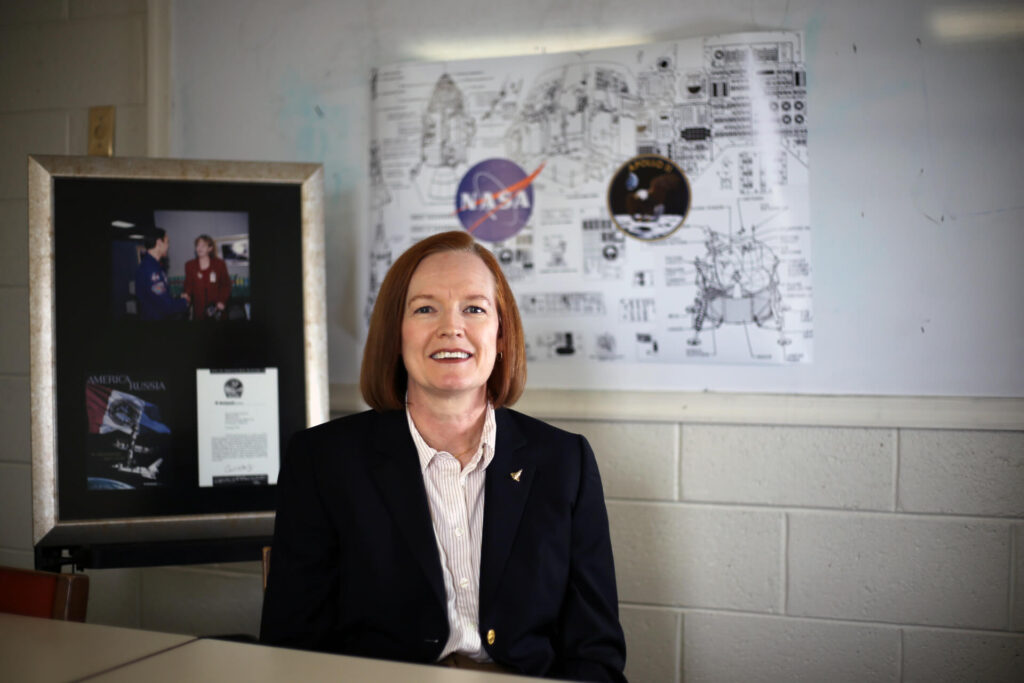Walking through the old Rockwell plant in Downey, California—home of the Apollo capsules, Space Shuttle orbiters, and parts of the International Space Station—was like stepping into a living museum. For Kirsten Armstrong, it was also the launchpad of a career that would put her at the forefront of space policy and strategy. Today, as President of Petra Strategy, Armstrong helps governments and businesses navigate the global space economy. But her roots trace back to the heart of America’s aerospace legacy.
“I was the first college graduate they had hired in five years,” Armstrong recalled. “I walked into a department of over 200, and I was one of only two people under the age of 30. Everyone treated me like their grandkid, showing me the history, the spacecraft, the legacy. It was a time warp—and a gift.”
Standing on the Shoulders of Giants
Armstrong began her career as an analyst at Rockwell International just as Boeing absorbed Rockwell and merged with McDonnell Douglas. That transition, she explained, was more than corporate maneuvering—it was a cultural shift. “Boeing and McDonnell Douglas brought an entirely new level of aerospace heritage. Suddenly, people were going back to school, expanding their expertise, and the pace of professional development accelerated. The legacy of World War II aircraft and Apollo hardware met the future of aerospace strategy.”
The Hidden Laboratories That Built Apollo
In our conversation, Armstrong drew direct lines from research facilities like the Naval Air Development Center (NADC) in Warminster, Pennsylvania, to the Apollo and Shuttle programs. “There are research labs across the country whose work still pays dividends today. The centrifuge in Warminster, for example, taught us how astronauts’ bodies responded to extreme G-forces—knowledge we’re still applying in microgravity research on the International Space Station.”
Unlike NASA’s highly public astronaut programs, these Cold War labs worked largely in secrecy. “Sometimes you can go faster when no one is checking your work constantly,” Armstrong noted. “Yet both models—secretive defense R&D and public-facing NASA programs—have delivered innovations we now use in everyday life, from medical technology to communications.”

Women in Aerospace: From Barriers to Breakthroughs
Armstrong also reflected on the evolving role of women in space. “NASA once studied women as potential astronaut candidates, but the culture wasn’t ready. Today, young women entering aerospace don’t really see barriers. That’s one of the greatest successes of the program—that it’s not just about astronauts anymore, but about women in every role: engineers, scientists, communicators. The industry is stronger because of it.”
She imagines what it must have been like for women who rode the centrifuge in Warminster or tested in the Mercury 13 program: “I bet they thought it was a wild ride. They were explorers, pushing the boundaries of human existence. I’d love to ask them—did they think they could go further?”
From Warminster to the Commercial Space Economy
As someone who has authored NASA’s 2014 Strategic Plan and pivotal industry reports like Start-Up Space, Armstrong sees a direct thread from the Cold War-era research hubs to today’s booming commercial space economy. “All those tests, simulations, inventions—they laid the foundation. Today’s companies are figuring out how to do them better, cheaper, and more efficiently. That’s the dividend of America’s early investments: a thriving space economy.”

Looking Ahead: Artemis and Inspiration
With Artemis, Armstrong believes we are carrying forward Apollo’s legacy. “The Artemis program is America’s plan to return to the Moon. What excites me is the idea of planting new ‘moon trees,’ like Apollo astronauts once did. Seeds flown to the Moon, planted here on Earth, serving as living reminders for future generations.”
For Armstrong, preserving history isn’t just about archives—it’s about inspiration. “I’ve seen the excitement in my own kids, touching the Johnsville centrifuge where astronauts once trained. Space continues to inspire. We need to keep that energy alive for the next generation.”
Support the Film
Help us tell the stories of space pioneers like Kirsten Armstrong.
• Visit BeforeTheMoonFilm.com
• Support the film through our donation page
• Follow us on Facebook: facebook.com/BeforeTheMoonFilm
Because before we go forward… we need to remember who got us here.



Leave a Reply